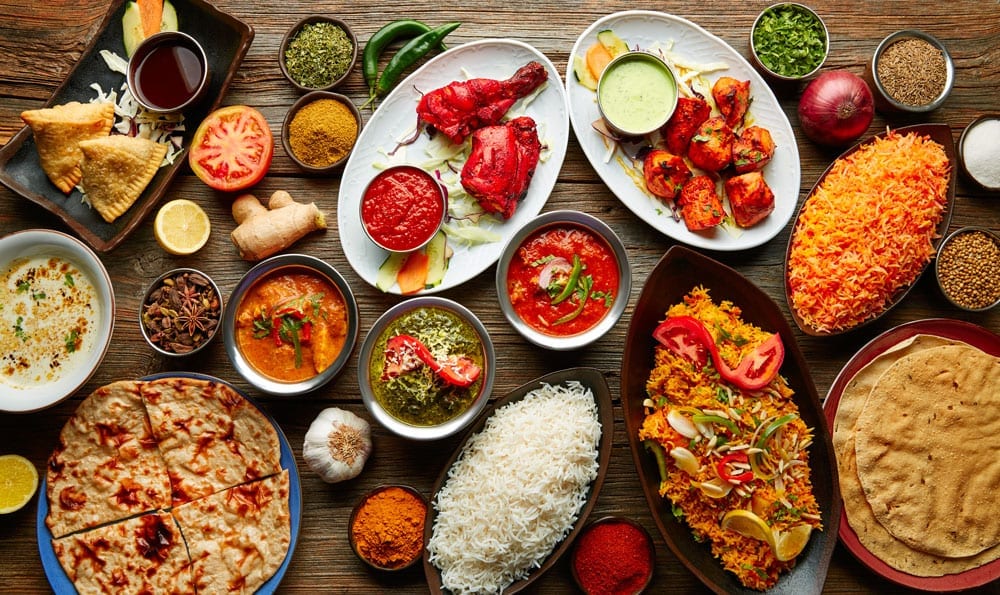What allergens are found in ethnic foods?
In Charleston, we’re very proud of our unique local cuisine. Whether you’re dining in or enjoying takeout at home, there are so many options to explore! The Lowcountry is a melting pot of people from various countries around the world, and they brought with them diverse and exotic cuisines. Elements of these cuisines are finding their way into the Charleston culinary scene. While delicious, unfortunately, these new foods with their variety of ingredients can have an impact on individuals with food allergies.
Food allergy experts say people with food allergies should apply the same degree of caution to ethnic foods as they do to any other foods they might eat. Language barriers, unknown ingredients and different preparation techniques can magnify the challenges for individuals with food allergies. This is especially important when consuming food outside of the restaurant through takeout. As many are practicing social distancing, it’s important to be aware of allergens before placing a pick-up order.
Researching common ingredients in a cuisine can point out food allergens to avoid. Thai food, for example, incorporates a wide variety of peanut products while Mexican and Italian foods use cheese to flavor and garnish dishes.
Asian cuisines like Japanese, Chinese, Thai and Korean can vary greatly in flavor but they share several of the big eight food allergens as major ingredients including peanut, fish and shellfish, soy, and eggs. Interestingly, soy sauce, always found in Asian restaurants, is usually well tolerated by those with a soy allergy because the soy proteins are destroyed by the fermentation process.
With French food, the emphasis is on fresh local cuisine but salad dressings and vinaigrettes can be hidden sources of nuts, eggs and seed oils. Expensive, hand-pressed oils such as walnut, almond and sesame are frequently used for their intense flavors and can be more allergenic than refined oils because they contain more nut protein. Mustard and mustard seed are common ingredients in French cooking and are a growing concern in France. In 2003 a French study reported mustard allergy accounts for 1.1% of food allergies in children.
A major theme of Indian cuisine is the use of a lot of spices. Some of the most common spices include bay leaves, coriander, cardamom, fenugreek, ginger, garlic and turmeric. These are usually ground-up and mixed into masalas as a flavorful base for vegetable and meat curry. The biggest risk with Indian food, however, is not going to be spices, as traditional spices are not particularly allergenic. Curry sauces can be thickened with cashew or almond paste. Lentils and legumes are a major source of protein in India with a large vegetarian population and can also trigger allergies. Allergies to the legume chickpea (garbanzo bean) is prevalent in India.
Italian food has become popular in the United States, but many common ingredients in it are highly allergenic. These include cheeses and dairy products, bread, pasta and pesto sauce which contain nuts (usually including pine nuts but occasionally walnuts).
Mexican food is typically edgy and saucy and while sauces can add flavor and spices, they can also be problematic for individuals with allergies. The sauces can contain nuts, chilies, cinnamon and garlic.
One of the most prominent allergens in African cuisine is peanuts often referred to as “ground nuts.” They are used in soups, stews and sauces for meat and rice dishes. Cornmeal and millet, starch staples of foods across Africa, can be a safe alternative for those with a wheat allergy.
Foods from areas around the Mediterranean Sea can produce earthy flavors based on a balance of citrus and herbs with liberal amounts of olives and olive oil. Seeds and nuts are prevalent in Middle Eastern cooking and are probably the biggest allergy-inducing culprits in the cuisine. Sesame seeds are particularly pervasive in Middle Eastern food, either as an oil or ground-up in a thin sauce called tahini. Baklava, a pastry made of layers of filo dough, may contain pistachios or walnuts.
So, as you or a family member ventures into an ethnic dining experience to explore the exciting and delicious flavors of another culture, do your due diligence and be aware of hidden food allergens in these foods. And most importantly, always be prepared with your EpiPen or Auvi-Q.
If you think you might be experiencing symptoms of food allergies, contact our team to schedule an appointment with a board-certified allergist today.




